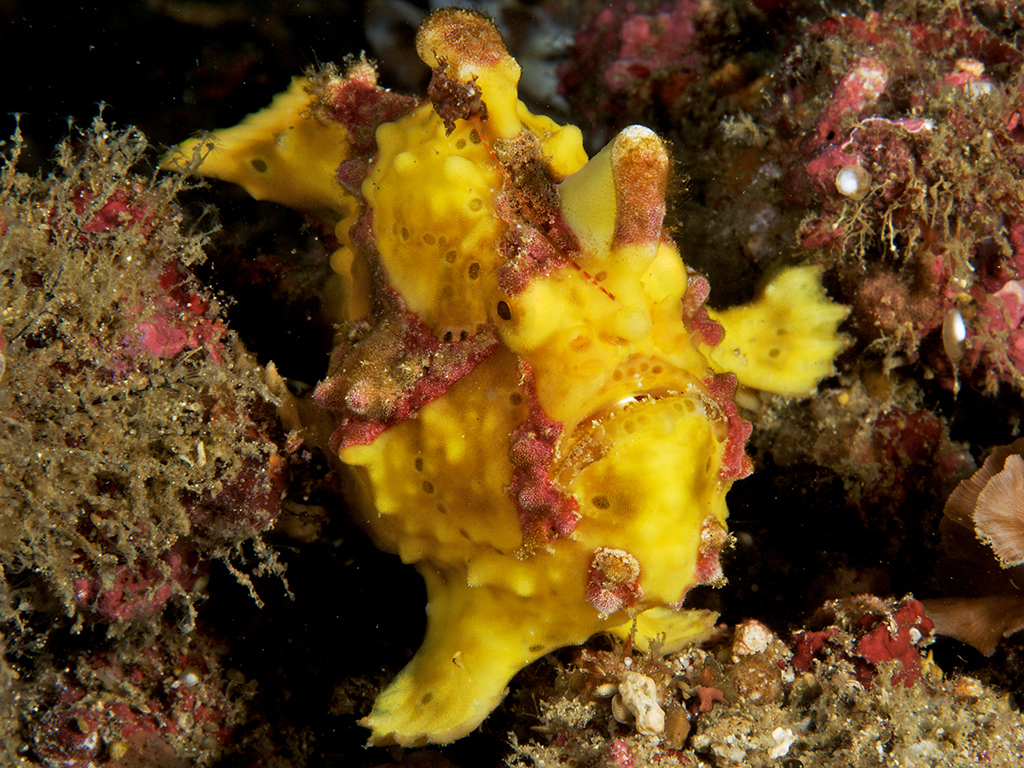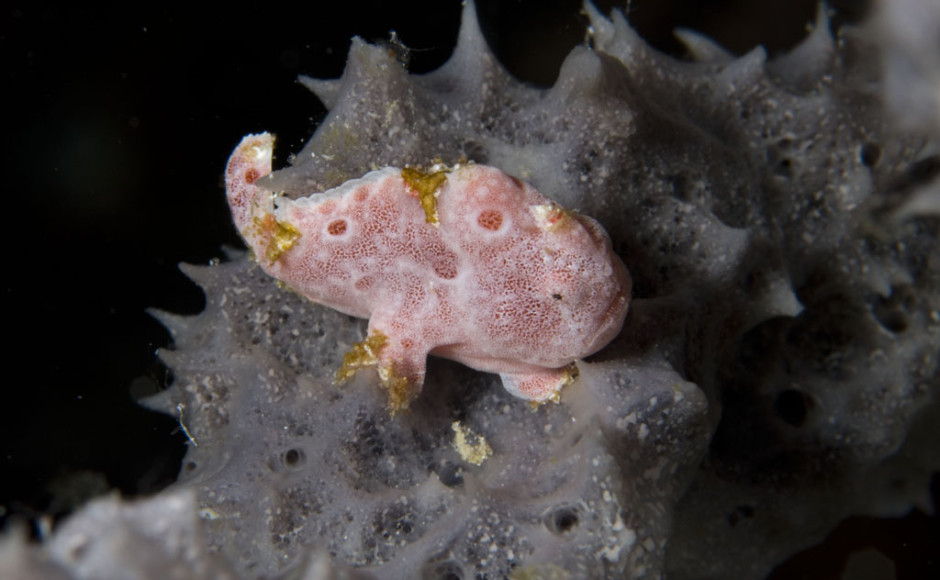The Fish that Goes Fishing
When you think of a predator, what attributes come to mind? Streamlined speed, explosive agility, aggressive strength… and then there’s the frogfish.
Slow, reclusive and lacking in both offensive and defensive weaponry–not to mention being far from streamlined–the frogfish wouldn’t seem to have the tools needed to become a lethal predator. Yet despite some seeming shortcomings in the attack department, these enigmatic little creatures have developed a unique strategy to capture prey: they hide in plain sight and go fishing.
Truly, frogfish are one of nature’s most unusual creatures.
Watch the video to see the frogfish catch a meal!
(video copyright Liquid Motion Film for Wakatobi Dive Resort)
The frogfish’s fishing rod is actually a modified dorsal fin with a fleshy appendage at its end, which serves as bait. To attract a meal, it flicks the bait up and down, just like a fisherman working a lure. If a potential target did manage to dart in and steal the bait, the frogfish is able to grow a new appendage to replace what was bitten off.

Do you see the frogfish? He’s the spongy black figure in the middle of this coral head.
photo by Wakatobi guest Warren Baverstock
To bring its prey closer, the frogfish uses camouflage and blends into its surroundings. That’s why you’ll have to look very closely among the sponges and corals on the reef to find a frogfish; they often look more like a sponge or a chunk of rock than a fish. Their coloration varies from species to species, and within the same species, while an individual frogfish is able to change it’s skin color and pattern to better match its surroundings. Skin textures can range from velvety-smooth to algae-covered warts, and even spots that match those of their habitat.

The frogfish’s fishing rod is a modified dorsal fin with a fleshy appendage at its end, which serves as bait.
photo by Wakatobi guest Steve Rosenberg
If a frogfish were to change its hiding spot, it could alter its coloration to hatch the new surroundings. But this doesn’t happen often, as these lurkers don’t move around much. Instead, they like to park themselves in concealment and wait for a meal to come their way. When they do move, they are as likely to walk as to swim. Frogfish often use their pectoral and pelvic fins to push themselves along the sea bottom. Of course, they can swim reasonably well when the need arises, and can also pump water out their gill openings to create a sort of jet propulsion effect.
The frogfish diet includes crustaceans, fish, and even other frogfish on occasion. When a potential meal gets within six to seven body lengths, the frogfish begins it’s fishing routine, moving its lure to mimic a swimming or drifting morsel. If the potential prey becomes interested, the frogfish may make a slow, stealthy advance, or it may just lie in wait while working the lure. Once the victim is lured within striking range, the frogfish attacks. But this is no lighting-fast pounce–though it does take places in less than 100th of a second. Rather than move in on the prey, the frogfish literally sucks dinner into its mouth by opening its jaw with near instantaneous speed. This rapid expansion enlarges the mouth to more than ten times its resting size, creating a powerful suction that pulls the meal in. Super-sizing the bite also allows the frogfish to gobble up catches nearly as large as themselves, and its stomach can also expand to accommodate big meals.
Abundant marine life and diverse, healthy coral growth make the reefs of Wakatobi prime fishing grounds for frogfish. There are more than 15 species of frogfish native to the region, and though they don’t reveal themselves to the causal observer, divers who look closely may realize that what they first thought was a lump of rubble or a clump of sponge is actually a stealthy predator, lying in wait. Wakatobi’s dive guides are experts at spotting frogfish, and are happy to direct guests to known individuals, or help seek out new finds.
Their bizarre appearances, unique colorations and unusual hunting tactics make frogfish prized by photographers and fish watchers alike. It takes a sharp eye to spot one amid the colors and patterns of Wakatobi’s reef, but because they tend to stay in one place, it’s often possible to return to the same spot and find the same frogfish working the same favorite fishing hole.
Truly, frogfish are one of nature’s most unusual creatures.



